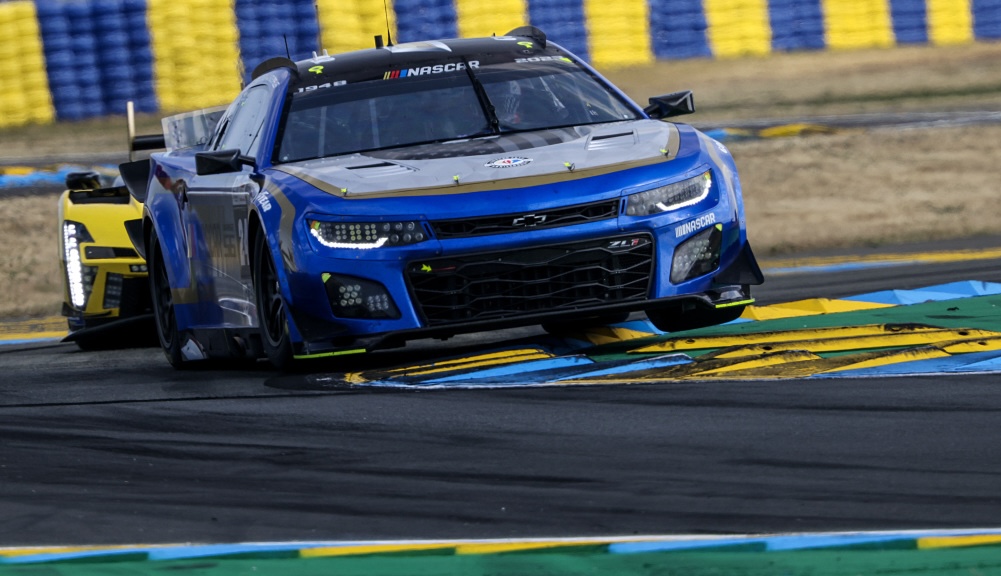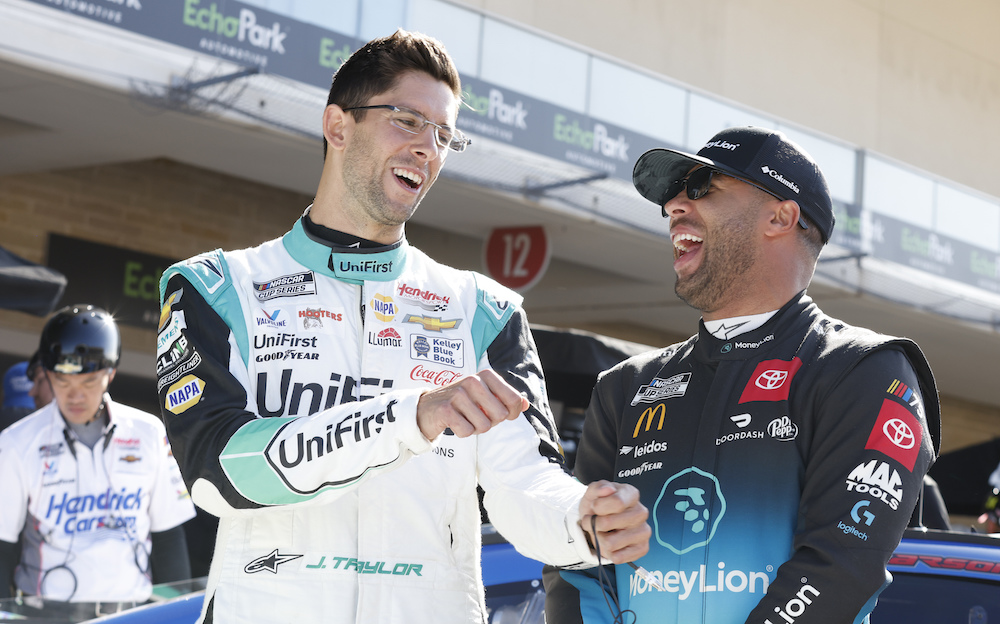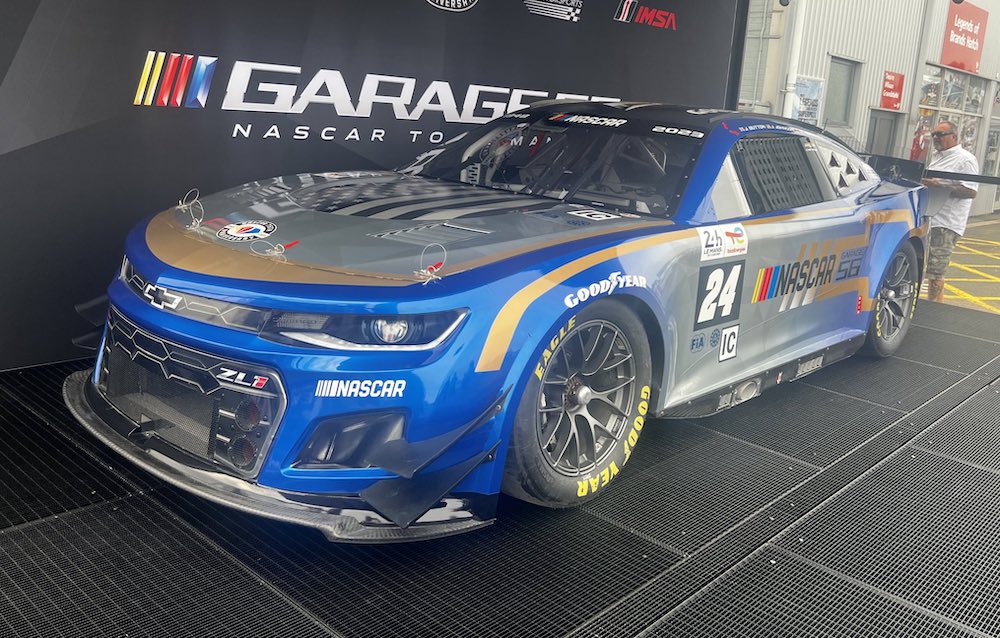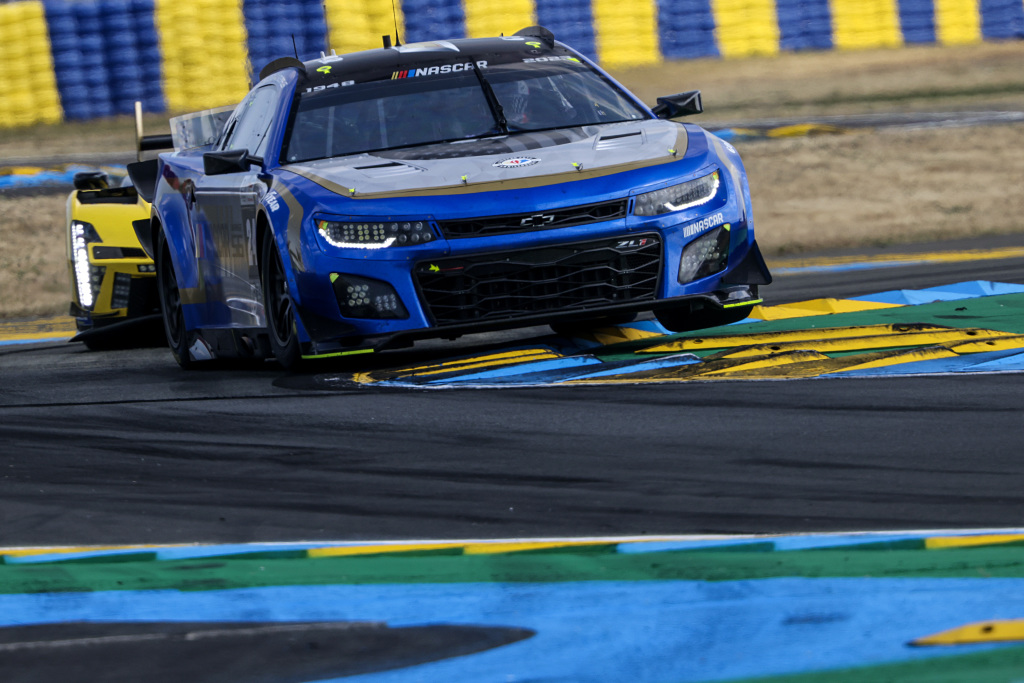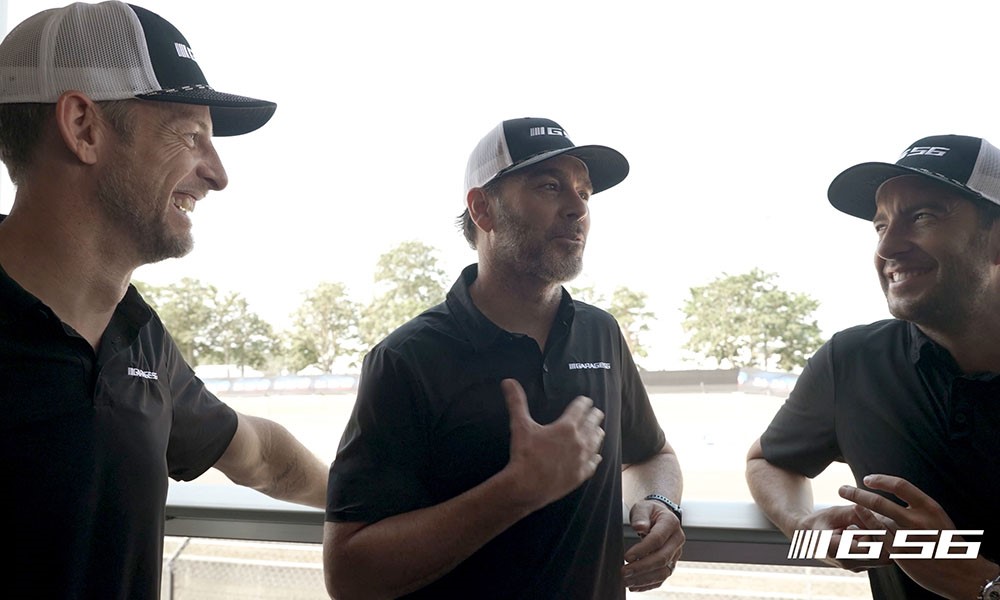When you look back on the 2023 FIA World Endurance Championship season, what will you remember most? Toyota’s title? Ferrari’s historic centenary Le Mans triumph? The Iron Dames claiming the final GTE race win? Or maybe, you’ll look back most fondly on the thundering, heavily modified NASCAR Cup Series Chevrolet Camaro ZL1 that took part in the Le Mans 24 Hours?
NASCAR’s Garage 56 project was undoubtedly one of the sports car racing stories of the year. And upon reflection, it feels even more remarkable and impressive now than it did at the time. Memories of the noise alone still keeps many Le Mans-goers who were trackside in June awake at night!
It was an effort that captured an astonishing amount of attention and won over just about every skeptic, despite the 2023 24 Hours being the event’s centenary running and the top-class battle for the overall win proving to be the most competitive and captivating it had been in years.
For the Hendrick Motorsports crew, which is so deeply embedded in the near-weekly fight for supremacy in the Cup Series, its journey to Europe to run the 5.8-liter V8-powered Chevy was like no other. And despite the buzz and excitement that surrounded the team from the moment it touched down in France and the inconvenience of the race falling mid-way through the racing calendar, the team remained focused and professional and delivered the goods in every respect.

The Camaro, which ran outside of the four main categories in a class of its own, made the finish after 285 laps and did so in fine style. Its trio of star drivers — Jenson Button, Jimmie Johnson and Mike Rockenfeller — ran the car at a head-turning pace and avoided creating any on-track dramas for the competitors in the other classes. The team did everything it set out to achieve and a whole lot more.
Before, during and long after the 24 Hours, the media attention proved constant. IMSA President John Doonan (who managed the team and program) admitted that he was almost overwhelmed by it.
“My phone keeps buzzing,” he told RACER at Brands Hatch the weekend after Le Mans, where the Garage 56 Camaro was displayed at the British circuit’s American Speedfest. “Every time I look down someone has written about it or posted pictures and videos. It really is amazing.”
The reach of the program was phenomenal, with 12,875 pieces of coverage counted in print and online and 33.4 million social media impressions on its official channels during the year. And it remains a talking point in motorsport circles around the world, months on from its one and only appearance.
However, before the Camaro and its legacy at Le Mans become a distant memory and focus shifts to the 2024 racing season, there’s one more tale to tell, and that is the key work behind the scenes at the FIA to ensure that the car was eligible to compete in the first place. Without determination and willingness to compromise, one of the most quirky and popular cars in the race’s history may have never turned a lap there in race week.
With NASCAR’s safety regulations significantly different to the FIA’s regulations in place for the 24 Hours, there had to be some give and take. From the moment the program was green-lit and revealed in 2022, there was an open dialogue between all key parties to ensure that by the time Le Mans week rolled around the race organizers, competitors, marshals and drivers would be ready to host the Camaro for its first endurance race.

Xavier Mestelan, the FIA’s chief technical and safety officer, was a key player in the FIA’s relationship with NASCAR, IMSA and Hendrick Motorsports, and recalls it being an exciting project to work on.
“My first thought was that it was a bit strange,” he reflects. “Garage 56 is usually something for new technology. So it was funny, but in parallel it was very exciting for the FIA. It was completely new, and the car is extreme in terms of weight, power and design.”
The FIA’s role in the Garage 56 project was to assess the car’s safety and give feedback throughout its development to the parties working on the car.
It was a two-way relationship, with so much preparation, including the FIA paying Hendrick Motorsports a visit at its shop before the IMSA-WEC Sebring doubleheader for a meeting “to discuss the project with engineers and share concerns” in the months leading up to Le Mans.
“It was a very good collaboration — we wanted to take the best practice from both sides of the Atlantic,” Mestelan explains. “For all the main safety requirements for the car, we clearly asked NASCAR to make all the adaptations needed. But for some other matters like the seat, we concluded that their technical choice was relevant for the car. We tried to take the best elements from each set of regulations.
“For example, the helmets and overalls NASCAR use are the same standard (as the FIA). For the crash structure, though, when you develop a standard you have to take into consideration the whole ecosystem, the types of barriers and each course type. What NASCAR do is something suitable to their tracks, so on our side we have the same for our tracks and our standards.”
The car’s weight turned out to be the most crucial factor in ensuring the car was deemed suitable to race at Le Mans. A standard Cup Series Camaro ZL1 weighs in at 3,200 lbs (1,451kg), which was thought to be too heavy. But the FIA worked with NASCAR to come up with solutions that would reduce the car’s weight to a similar figure to the GTE cars (eventually 496 lbs/225 kg lighter), which the Camaro’s bespoke safety regulations were based on.
Various modifications were then made to the car to meet that target, which — according to Garage 56 chief of staff Jessica Hook in an interview with PMW Magazine — was made more challenging as the car needed weight added initially to accommodate a full data acquisition harness, headlights and additional aero devices, among other things.
In the end, the car was heavily revised to ensure it was compliant. The key changes included a redesigned roll cage, a shift in fuel cell position and a modified steering column. “We put it on a diet,” Jimmie Johnson told RACER at La Sarthe. “We wanted to be able to blend in, and kind of fit the performance levels of the other cars.”
“Weight was a safety concern,” Mestelan adds. “It’s also important for performance. You have to imagine the car sharing the track with LMP2, GTE and Hypercars. So reducing the weight was clearly a target. It was crucial.
“In the end, the minimum weight was something like 1340kg, around 70 kilos more than the GTE cars. So it was very close, but that’s why we modified the roll cage slightly with them, to help achieve the weight.
“NASCAR changed the design of the roll cage to reduce weight and had to perform static load simulations to meet FIA requirements. They also modified the fuel dock because the position was too far away. We put the fuel tank in the middle of the roll cage in front of the rear axle and modified the front and rear impact structure. We also used carbon brake discs — we saved a few kilos. The base of the requirements was GT3 for us, except for the weight.”

As Mestelan points out, weight and performance go hand in hand, and in this case, it became crucial to ensure the Camaro sat in a comfortable window that wasn’t too slow for the GTE drivers to deal with or too fast for drivers in Hypercars and LMP2.
“It has something like 700 horsepower, a little bit less than 500 kilowatts, compared to what we have in GTE, which is something like 370 kilowatts (496hp), with completely different tires. The target was to have a NASCAR Cup Series car close to the GT cars, in terms of lap time, top speed and braking ability.
“We didn’t want a big chicane in the middle of the track or a car that was very fast but too slow in the corners. We did work on simulations, especially on downforce and drag, to get a mixture of power, tire efficiency and aero efficiency. Hendrick chose the max downforce setup to improve the pace in certain corners like the Porsche Curves and reduce the top speed so it was close to GTE.”
In practice, the performance actually came as a surprise, the Camaro lapping the circuit in 3m53.761s during the Test Day. This led to a change of plans.
Initially, the team was expected to run in a performance window below the car’s potential to a target time of 3m54s. However, ahead of the race, the team was essentially told to “go for it” after its impressive showing at the test, which resulted in a 3m47.976s qualifying time — multiple seconds faster than the GTE pole time of 3m52.376s — and a 3m50.512s best lap set during the race itself.
In addition to challenges out on track, on pit lane the team’s pit stops were also a key area that the FIA had to take a look at. By performing NASCAR-style pit stops at the event, with a floor jack and drivers climbing into the car via the driver’s side window, there were clear differences to take into account.
“The main topic was the refueling, this was the most dangerous part,” Mestelan recounted. “The equipment and regulations were very close at NASCAR to what we use in Le Mans, so this was not a big concern. The main issue was to make sure that the mechanics were awake for each stop, as they were not trained for that (endurance races), so it may have been difficult at the end of the race. But it worked out.”

In the end, however, Hendrick Motorsports’ crew battled through the race and showed no real signs of fatigue by the finish on Sunday. Instead, they relished the experience — which for many of them was their first trip to Europe — and played a key part in the project’s main goal, which Doonan told RACER before the 24 Hours was to “show everyone what NASCAR is about.”
They wowed crowds all week long with their athleticism in the pit lane and even won the Pit Stop Challenge for GT teams before the race with an incredible 10.364s tire change. That was just one snapshot of the week, which went entirely to plan and proved all the naysayers wrong.
The car was fast, loud, proud and in the eyes of the FIA, safe too. While not the most technologically advanced innovative car to run at the Le Mans 24 Hours, it truly captured the spirit of the event, while showcasing NASCAR and its “fan-first” attitude to motorsports on the world stage, raising the bar for all future Garage 56 projects.
It’s going to take something truly special to top it…
